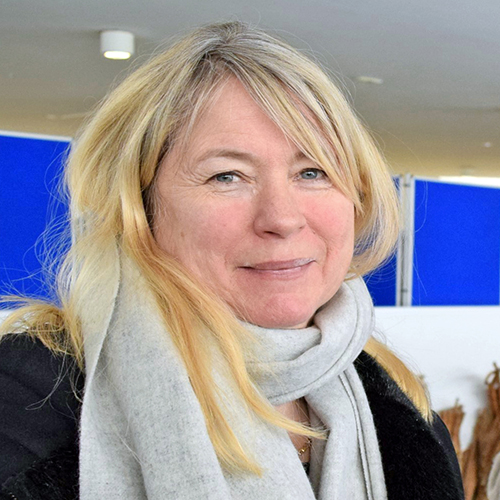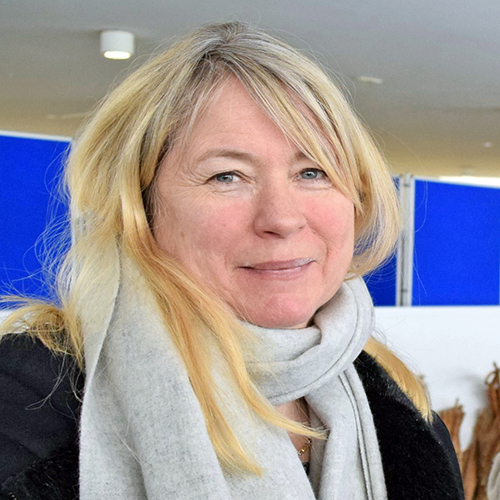
Environmental Contaminants in Human Milk
According to a recent WHO/UN report, synthetic chemicals are a threat to human health. Persistent Organic Pollutants (POPS) are of special concern to humans since they bioaccumulate and biomagnify. Species on the top of the food chain pyramid such as humans are thus among the most heavily exposed. POPS is a group of chemicals compromising PCBs, DDT, Dioxin, Organic Pesticides, flame retardants, as well as the more recent contaminants perfluorinated compounds. They are ubiquitous in air, water and soil, food and humans. In spite of DDT being forbidden more than 40 years ago, both DDT and its metabolite DDE, are still found in breastmilk. This demonstrates the long legacy of these chemicals. The child is exposed to the mother's accumulated levels while in the womb since most of these chemicals pass to the uterus unrestricted, and through breast milk. In spite of declining levels of forbidden POPs we demonstrate that perinatal exposure to POPs are associated with adverse effects on infant health. Large multi-cohort studies encompassing many thousand mother-child pairs report adverse effects of these chemicals on growth and neurodevelopment, with an increased risk of obesity and behavioral disorders among those most heavily exposed.
This lecture was originally offered as part of the GOLD Lactation Conference 2022.


Merete Eggesboe, MD and an environmental epidemiologist at the Norwegian Institute of Public Health, is dedicated to understanding the role of the microbiome and environmental toxicants in children’s health. In order to do so she initiated the prospective HUMIS & NoMIC birth cohorts, encompassing more than 2600 mother-child pairs where the gut microbiome and toxicant exposure has been mapped in human milk and fecal samples. She has now followed them for 18 years and the longitudinal extensive data collection provides a wealth of research opportunities. It has also been linked to the Norwegain Patient Registry where all specialist diagnosis set on all research subjects are available. The focus so far has been on understanding their role in reproductive health, growth/obesity, neuropsychological functioning and vaccine immune responses. Recent studies have also looked at how toxicants in human milk may affect the infant’s microbiome. And vice versa: how our gut microbiome affects the metabolism of toxicants. She has been cited >6000 times over the last 5 years and has an h-index of 51 and has published more than 100 peer-reviewed papers. She is a popular speaker, leads several prestigious Norwegian Research council programs and participates in several EU projects.
2: Describe the current research on DDE and dioxin in human milk and obesity.
3. Describe the current research on environmental contaminants in human milk and ADHD.
According to a recent WHO/UN report, synthetic chemicals are a threat to human health. Persistent Organic Pollutants (POPS) are of special concern to humans since they bioaccumulate and biomagnify. Species on the top of the food chain pyramid such as humans are thus among the most heavily exposed. POPS is a group of chemicals compromising PCBs, DDT, Dioxin, Organic Pesticides, flame retardants, as well as the more recent contaminants perfluorinated compounds. They are ubiquitous in air, water and soil, food and humans. In spite of DDT being forbidden more than 40 years ago, both DDT and its metabolite DDE, are still found in breastmilk. This demonstrates the long legacy of these chemicals. The child is exposed to the mother's accumulated levels while in the womb since most of these chemicals pass to the uterus unrestricted, and through breast milk. In spite of declining levels of forbidden POPs we demonstrate that perinatal exposure to POPs are associated with adverse effects on infant health. Large multi-cohort studies encompassing many thousand mother-child pairs report adverse effects of these chemicals on growth and neurodevelopment, with an increased risk of obesity and behavioral disorders among those most heavily exposed.
Accreditation
CERPs - Continuing Education Recognition Points
Applicable to IBCLC Lactation Consultants, Certified Lactation Consultants (CLCs), CBEs, CLE, Doulas & Birth Educators. GOLD Conferences has been designated as a Long Term Provider of CERPs by the IBLCE--Approval #CLT114-07. This program is approved for 1 L-CERP
CERPs are valid until 04/04/2025.
Dietetic CPEUs - Continuing Professional Education Units
Applicable to Dieticians & Nutritionists, this program is approved for 1 Dietetic CPEU by the Commission on Dietetic Registration - the credentialing agency for the Academy of Nutrition and Dietetics.
Dietetic credits are valid until 04/04/2025.
Midwifery CEUs - MEAC Contact Hours
This program is accredited through the Midwifery Education & Accreditation Council (MEAC) and is approved for 1 Hours the equivalent of 0.1 CEU. Please note that 0.1 MEAC Midwifery CEU is equivalent to 1.0 NARM CEUs.
MEAC credits are valid until 04/04/2024.
If you have already participated in this program, you are not eligible to receive additional credits for viewing it again. Please send us an email to [email protected] if you have any questions.
Additional Details
Viewing Time: 2 Weeks
Tags / Categories
How much time do I have to view the presentations?
- The viewing time will be specified for each product. When you purchase multiple items in your cart, the viewing time becomes CUMULATIVE. Ex. Lecture 1= 2 weeks and Lecture Pack 2 = 4 Weeks, you will have a total of 6 weeks viewing time for ALL the presentations made in that purchase.
- Time for viewing the talks begins once you purchase the product. For Live Webinars & Symposiums, the viewing period begins from when the live event takes place. Presentations can be accessed 24/7 and can be viewed as many times as you like during the viewing period.
What are bundled lectures?
- Presentations may be available individually or via a bundled package. Bundled lectures are a set of lectures that have been put together based on a specific category or topic. Some lectures will be available in both individual and lecture form, whereas others will be available only via a bundled lecture pack.
Will there be Handouts?
- YES! Each lecture comes with a PDF handout provided by the Speaker.
Some lectures include a Q&A, what does that mean?
- During our online conferences, presentations that occur live are also followed by a short 15 minute Question & Answer Session. The Speaker addresses questions that were posted by Delegates during the presentation. We include the recording of these Q&A Sessions as a bonus for you.
How can I receive a Certificate?
- If this presentation offers a certificate, once you are done viewing the lecture or the lectures within a bundle, submit your attendance record in order to be able to download your certificate. You'll be able to see which credits are offered for the lecture by hovering over the "Credits Available" link within the "Speakers & Topics" tab.
Professionals that selected this package also viewed

|
|

|







